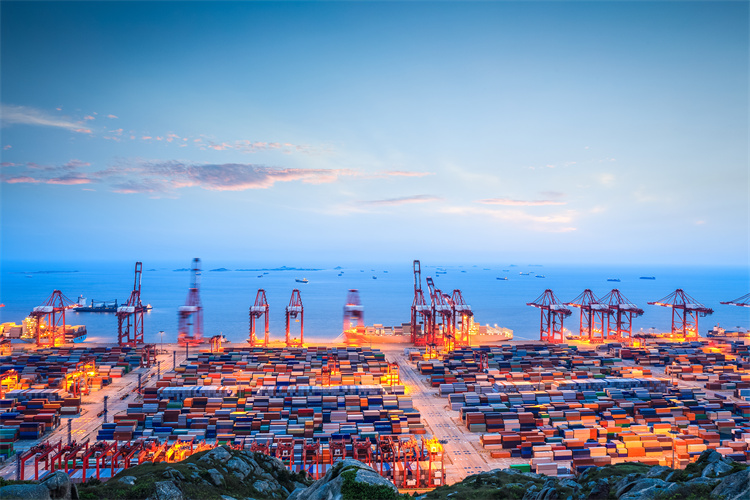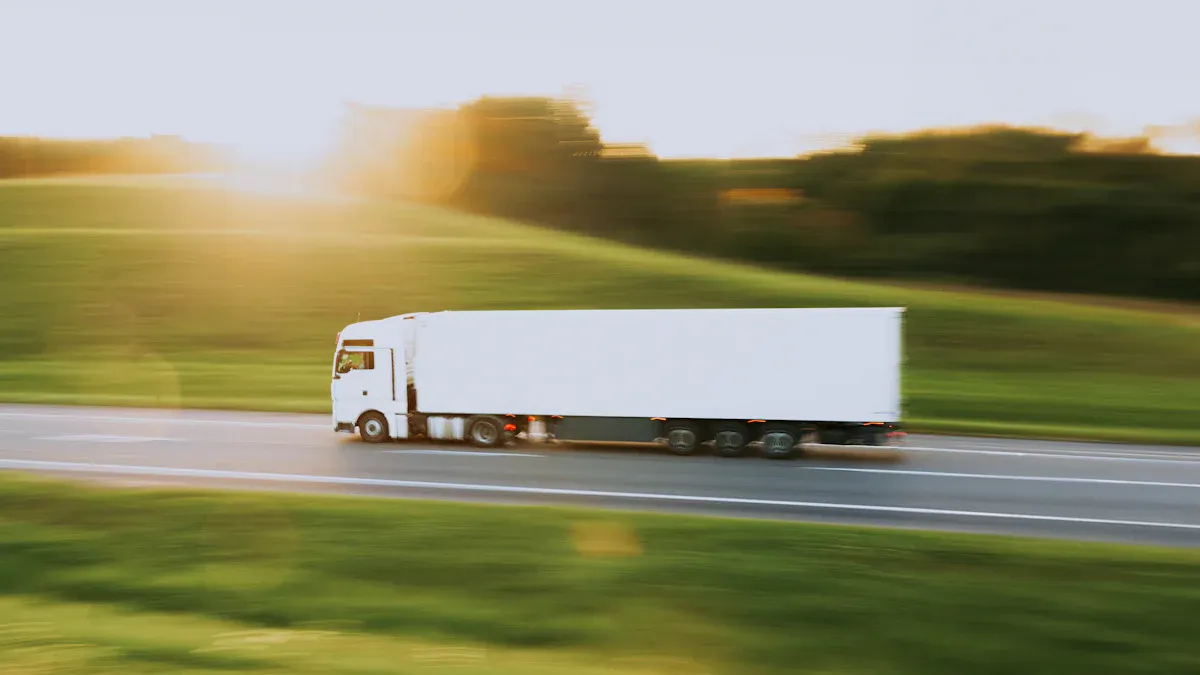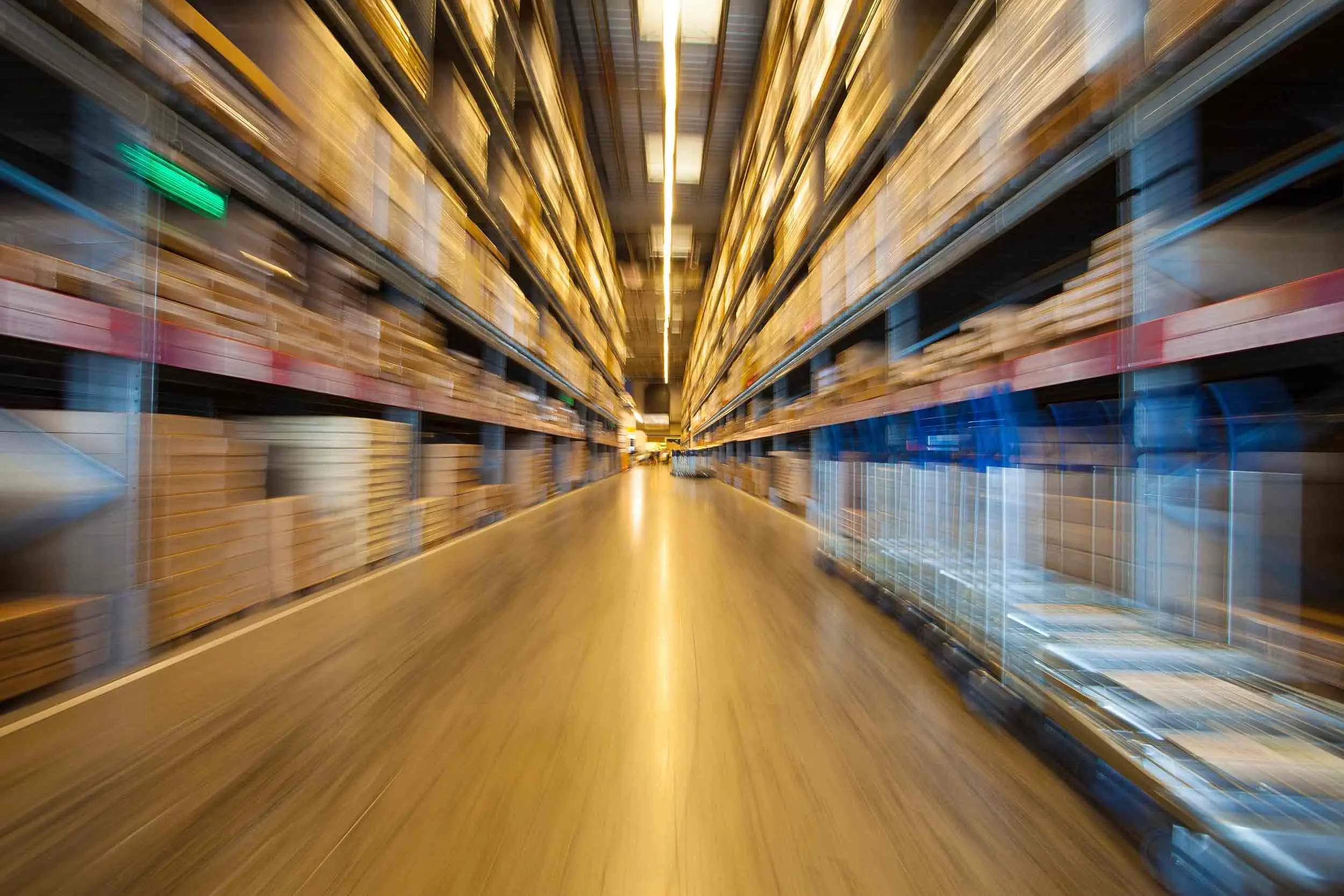How Sustainable Logistics is Shaping the Future of Supply Chains

Green logistics is transforming the way supply chains operate by reducing environmental impact while enhancing efficiency. Companies with robust ESG scores outperform financially by 20%, proving that sustainable practices deliver tangible benefits. With logistics contributing 10-15% of a company’s carbon footprint, adopting sustainable logistics is essential for global operations aiming to prioritize eco-friendly solutions.
Key Takeaways
Using eco-friendly logistics can lower pollution and save money by 20%.
Spending on green tools, like electric cars and solar power, boosts work efficiency and helps the planet.
Using recyclable packaging and reusing materials cuts trash and gives customers the eco-friendly products they want.
Key Logistics Trends Shaping Sustainability in 2025

Adoption of Green Technologies in Logistics
Green technologies are changing how logistics work. They help businesses cut pollution and work better. Many companies now use green transportation and sustainable warehousing to follow environmental rules. These tools also help lower carbon footprints and connect to global markets.
Key advancements include:
Using IoT to track supply chains in real time.
Adding energy-saving systems in warehouses.
Switching to renewable energy for logistics centers.
Strict environmental rules and demand for green solutions push this change. Businesses meet rules and improve how they operate at the same time.
Eco-Friendly Packaging and Waste Reduction
Packaging helps reduce waste and save resources. Using eco-friendly materials lowers pollution. For example, bamboo packaging protects forests, and renewable energy cuts carbon emissions.
Evidence Type | Description |
|---|---|
Less solid waste | Packaging made up 28.1% of all waste in 2018. |
Lower fossil fuel use | 99% of plastics need fossil fuels, adding to greenhouse gases. |
Saving natural resources | Bamboo and other materials reduce the use of non-renewable items. |
Better energy use | Renewable energy in packaging production reduces emissions. |
These steps match what consumers want. A study found 72% of people will pay more for eco-friendly products. Sustainable packaging is a smart choice for businesses.
Renewable Energy Integration in Supply Chains
Renewable energy is key to greener supply chains. Solar and wind power are cleaner than fossil fuels. They also create jobs and give more people access to clean energy.
Impact Type | Description |
|---|---|
Environmental Impact | Fewer emissions than fossil fuels. |
Economic Impact | More jobs in renewable energy industries. |
Social Impact | Better access to clean energy and less energy poverty. |
Adding renewable energy to supply chains saves money, boosts efficiency, and helps the planet.
Electrification of Freight and Transportation Fleets
Electric vehicles (EVs) are changing freight and transport fleets. Road freight now causes over 7% of global CO2 emissions. This could rise to 16% by 2050. Switching to EVs is vital for sustainability.
Public transport is also using electric buses to meet global goals. EVs need new schedules due to shorter ranges, but the benefits are worth it. Electrification cuts emissions and makes businesses leaders in green logistics.
Circular Supply Chain Models for Resource Optimization
Circular supply chains reuse and recycle to cut waste. Companies like Apple, Lenovo, and H&M are leading with smart ideas:
Apple Inc.: Recycled water and waste kept over 90% of trash out of landfills by 2020.
Lenovo Group Ltd.: Focuses on green materials and carbon-neutral logistics.
H&M Group: Uses blockchain to track items and recycle clothes.
These models save resources and boost brand image. Circular supply chains cut costs, improve efficiency, and meet customer demands for sustainability.
Strategies for Businesses to Embrace Sustainable Logistics
Modernizing Fleets with Low-Emission Vehicles
Switching to low-emission vehicles helps cut carbon emissions. Electric vehicles (EVs) and hybrids are cleaner than gas-powered ones. Using EVs lowers fuel costs and maintenance expenses. It also supports global efforts to reduce pollution.
Eco-friendly driving habits are important too. Shorter routes and less idling reduce emissions. Many companies save fuel and improve fleet efficiency with EVs.
🚛 Tip: Add telematics systems to track vehicle performance and find ways to lower emissions.
Investing in Green Warehousing and Infrastructure
Green warehouses focus on saving energy and reducing waste. Using recycled materials in construction helps the environment. Energy-saving tools like LED lights and automated systems cut energy use and boost efficiency.
Factor | Description |
|---|---|
Building warehouses with eco-friendly materials and techniques. | |
Enhanced operational efficiency | Improving processes to reduce waste and use resources wisely. |
Energy-saving technologies | Tools that lower energy use in managing inventory and shipping. |
Waste recycling | Systems to reuse waste and reduce trash sent to landfills. |
Leveraging renewable energy sources | Using solar or wind power to cut greenhouse gas emissions. |
Digital inventory systems save time and reduce paper use. These upgrades help businesses save money and work more efficiently.
Leveraging AI and Big Data for Route Optimization
AI and Big Data make logistics smarter by improving route planning. They analyze traffic, weather, and delivery schedules to save fuel and lower emissions.
UPS uses AI to save millions of gallons of fuel each year. DHL uses predictive tools to cut emissions by 20% and speed up deliveries by 15%. These systems also reduce delays and wait times, making operations smoother.
Evidence Description | Impact |
|---|---|
Reduction in fuel consumption | |
Reduction in CO₂ output | Up to 20% fewer emissions |
Reduction in wait times | 30–40% shorter wait times |
Decrease in vehicle delay time | 40% fewer delays |
🌍 Note: Using AI tools helps your business lead in innovation while supporting green logistics.
Partnering with Eco-Friendly Suppliers and Stakeholders
Working with suppliers who care about sustainability strengthens green logistics plans. Set clear goals and include them in buying processes. Help suppliers adopt eco-friendly practices with training and incentives.
Sharing progress builds trust with stakeholders. Metrics like CSR compliance and community engagement show your commitment to sustainability.
Key success metrics:
Percentage of suppliers checked for CSR compliance.
Hours spent on community projects and volunteering.
Rewards for suppliers who follow green practices.
🤝 Tip: Build lasting partnerships with suppliers who share your sustainability goals to create a stronger, greener supply chain.
Educating Teams on Sustainability Practices
Your employees are key to meeting green logistics goals. Teach them about energy-saving warehouse management and eco-friendly driving. Training can also cover waste reduction methods.
Encourage workers to follow sustainable habits by setting clear rules. Recognize their efforts to motivate them. A trained team improves efficiency and shows your company’s dedication to sustainability.
📘 Tip: Use games to make sustainability training fun and rewarding for employees.
How JUSDA is Driving Sustainable Logistics Innovation
JUSDA ESG: A Complete Plan for Green Supply Chains
JUSDA ESG provides a strong plan for sustainable operations. It uses smart tools like AI and big data to improve supply chains. These tools help predict demand, plan routes, and fix problems early. This reduces waste and cuts pollution. JUSDA also uses green methods, like carbon-free warehouses and electric vehicles, to meet global eco-friendly goals.
Strategy | Description |
|---|---|
Better demand prediction, route planning, and maintenance for transport. | |
Cloud Computing Integration | Real-time data access with cloud systems for flexible operations. |
Big Data Analytics | Uses data to check supplier performance and reduce risks. |
Eco-friendly strategies | Carbon-free warehouses and electric vehicles for last-mile delivery. |
Using these green methods saves money, works better, and meets eco-friendly demands.
🌱 Tip: Use JUSDA’s C2M2C model to remove extra steps and simplify your supply chain.
Using JusLink for Real-Time Supply Chain Teamwork
JusLink changes how supply chains work by giving live updates. It also uses smart tools to predict and fix problems early. The platform combines main services with extra ones, offering custom solutions. Live updates lower costs and make work faster. Big data helps find and solve issues before they grow.
Feature | Benefit | Impact on Supply Chain Collaboration |
|---|---|---|
Cuts communication and supply chain costs | Makes work faster | |
Big Data Analysis | Finds and fixes problems early, creating new chances | Helps make better decisions |
One-Stop Solutions | Combines main and extra services for custom solutions | Simplifies operations |
JusLink helps you work better with others, making your supply chain stronger and ready for changes.
Example: JUSDA’s Success in Global E-Commerce Logistics
JUSDA’s smart ideas have improved e-commerce logistics worldwide. For example, it worked with Sharp to make its supply chain better. By using AI tools and digital systems, JUSDA cut costs by 20% and sped up order processing. This shows how circular supply chains can save money and help the planet.
📦 Note: JUSDA shows how digital tools can save money and improve e-commerce logistics.
JUSDA’s Focus on Renewable Energy and Cutting Carbon
JUSDA supports renewable energy and cutting carbon pollution. Its programs reward actions that lower greenhouse gases. From 2009 to 2011, JUSDA projects made over 6.5 million megawatt hours of clean energy. These efforts cut CO2 and N2O emissions, helping the planet.
Conservation programs store carbon and lower emissions.
Renewable energy projects save energy and use fewer fossil fuels.
Carbon-free warehouses and electric vehicles support green supply chains.
By focusing on clean energy, JUSDA helps you create eco-friendly operations that are good for the planet and your business.
Real-World Examples of Sustainable Logistics in Action

A Global Retailer’s Shift to Electric Delivery Vehicles
Electric delivery vans are changing how big retailers operate. By using zero-emission medium- and heavy-duty vehicles (MHDVs), companies lower pollution and save money. Electric vans now make up 12% of large fleets. In 2023, 7% of new van registrations were electric. These vans are cheaper to run, costing $0.10 per mile compared to $0.19 for gas vans.
Statistic Description | Value | Year |
|---|---|---|
Total zero-emission MHDVs deployed | 27,500 | 2023 |
Percentage of new registrations for electric vans | 7% | 2023 |
Percentage of electric vans in large fleets | 12% | 2023 |
Average fuel cost per mile (electric vs gasoline) | $0.10 vs $0.19 | 2023 |
Switching to electric fleets helps the planet and builds trust. Customers like businesses that care about the environment.
How AI Route Planning Cut Emissions for a Logistics Company
AI tools are making deliveries smarter and greener. They plan routes by studying traffic, weather, and schedules. This saves fuel and reduces miles driven. One logistics company cut carbon emissions by 12% using AI. Night-time routes planned by AI also helped lower emissions.
AI helps cut greenhouse gases by improving delivery routes.
A logistics company reduced emissions by 12% with AI tools.
Better routes mean faster deliveries and happier customers.
Using AI makes logistics more eco-friendly and reliable.
A Manufacturer’s Win with Circular Packaging
Circular packaging helps manufacturers reuse and recycle materials. This reduces waste and the need for new resources. Companies using this method save money and improve supply chains. Recycling packaging into new items quickly also cuts carbon emissions.
For example, better packaging designs have sped up supply chains. These changes show how green practices can help both the planet and businesses.

JUSDA Solutions
To provide you with professional solutions and quotations.
Sustainable logistics opens doors to make supply chains better. It helps the environment, saves money, and uses resources wisely. Companies going green cut pollution, save costs, and gain loyal customers. These actions also make businesses stronger and ready for the future.
You can take charge by using eco-friendly ideas. Work with others, track progress, and create new ways to succeed. Walmart’s Project Gigaton proves cutting emissions improves supply chains. Start now to build a cleaner, smarter future.
See Also
Transforming Logistics Through Innovative Supply Chain Solutions
A Comprehensive Resource for Eco-Friendly Supply Chain Transport
The Urgent Need for Sustainable Practices in Supply Chains
Artificial Intelligence in Supply Chains: Shaping Future Logistics
